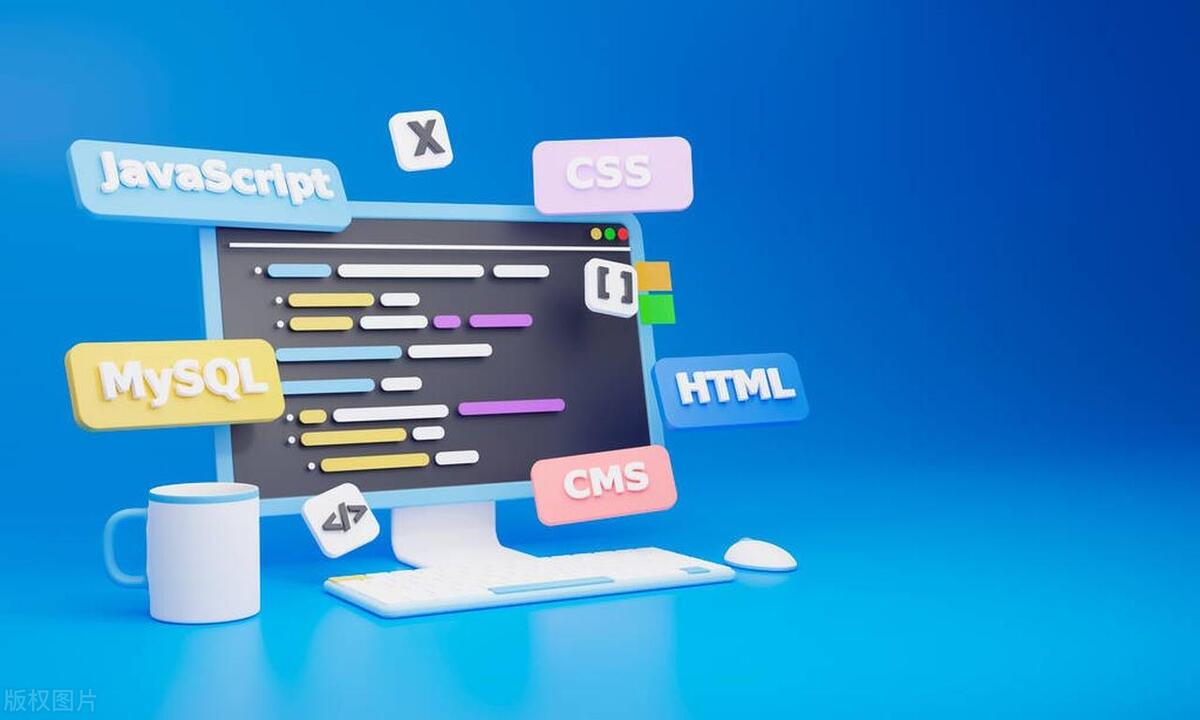Responsive picture design can be achieved through a variety of techniques. 1. Use max-width and height: auto to ensure that the picture is automatically scaled and maintained in proportion, which is suitable for most content websites; 2. Use object-fit to control the filling method, such as cover, contain, fill, which is suitable for fixed-size containers; 3. Use background-size to process the background image and control the focus with background-position; 4. Use srcset to achieve multi-resolution adaptation to improve performance and display effects. Each method has its applicable scenarios and precautions.

Responsive scaling of images is a common but critical issue in web design. To make the pictures appear naturally, clearly without destroying the layout on different devices, width: 100% is not enough. Only by mastering several practical skills can you truly achieve flexible control.

Use max-width and height: auto combination
This is the most basic and most commonly used method. Setting img { max-width: 100%; height: auto; } ensures that the image does not exceed its container width while maintaining the original aspect ratio.

- The picture will automatically shrink to fit the screen, but will not be deformed by stretching and deforming
- This combination is very friendly to most content websites (such as blogs)
- Be careful not to miss
height: auto, otherwise it may lead to high fixed and proportional imbalance
This method is suitable for cases where the <img src="/static/imghw/default1.png" data-src="https://img.php.cn/upload/article/000/000/000/175200050841297.png" class="lazy" alt="Techniques for Responsive Image Scaling in CSS" > tag is directly embedded, and is also suitable for most scenarios outside the background image.
Use object-fit to control image filling method
When the image needs to fill a container of fixed size, using object-fit allows for more fine control of the presentation. Common values ??include:

-
object-fit: cover: keep the scale centered crop, suitable for avatar or cover image -
object-fit: contain: Full display of pictures, with blank space around, suitable for gallery display -
object-fit: fill: Force fill container, may deform
img {
width: 100%;
height: 300px;
object-fit: cover;
}This method is very suitable for unified processing of image areas in card layouts, but be careful about compatibility issues with older browsers (IE does not support them).
Responsive background image: the wonderful use of background-size
For pictures used as background, it is recommended to use background-size to achieve responsive effects:
-
background-size: cover: Similar toobject-fit: cover, commonly used in banner or full-screen background -
background-size: contain: guaranteed to be fully displayed, suitable for logo or icon background
Paired with background-position you can better control the focus position, such as background-position: center top can prevent the character's head from being cut.
This type of practice is especially important on mobile because the screen proportions are diverse and the cropping strategy will affect the visual focus.
Multi-resolution adaptation with srcset (advanced)
If you want to load images of different sizes according to the pixel density of different devices, you can combine HTML's srcset attribute and CSS media query:
<img src="/static/imghw/default1.png" data-src="small.jpg" class="lazy"
srcset="medium.jpg 1024w, large.jpg 1920w"
sizes="(min-width: 768px) 50vw, 100vw"
alt="Responsive image">This allows the high-definition screen to load larger images, and save traffic with small images in low bandwidth environments. Although the configuration is a little more complex, it is well worth using in performance-sensitive projects.
These techniques can basically cover most of the requirements of responsive images if used alone or in combination. The key is to choose the appropriate method based on the specific scenario, rather than just using templates. Basically all is it, not complicated but it is easy to ignore details.
The above is the detailed content of Techniques for Responsive Image Scaling in CSS. For more information, please follow other related articles on the PHP Chinese website!

Hot AI Tools

Undress AI Tool
Undress images for free

Undresser.AI Undress
AI-powered app for creating realistic nude photos

AI Clothes Remover
Online AI tool for removing clothes from photos.

Clothoff.io
AI clothes remover

Video Face Swap
Swap faces in any video effortlessly with our completely free AI face swap tool!

Hot Article

Hot Tools

Notepad++7.3.1
Easy-to-use and free code editor

SublimeText3 Chinese version
Chinese version, very easy to use

Zend Studio 13.0.1
Powerful PHP integrated development environment

Dreamweaver CS6
Visual web development tools

SublimeText3 Mac version
God-level code editing software (SublimeText3)
 How does React handle focus management and accessibility?
Jul 08, 2025 am 02:34 AM
How does React handle focus management and accessibility?
Jul 08, 2025 am 02:34 AM
React itself does not directly manage focus or accessibility, but provides tools to effectively deal with these issues. 1. Use Refs to programmatically manage focus, such as setting element focus through useRef; 2. Use ARIA attributes to improve accessibility, such as defining the structure and state of tab components; 3. Pay attention to keyboard navigation to ensure that the focus logic in components such as modal boxes is clear; 4. Try to use native HTML elements to reduce the workload and error risk of custom implementation; 5. React assists accessibility by controlling the DOM and adding ARIA attributes, but the correct use still depends on developers.
 Server-Side Rendering with Next.js Explained
Jul 23, 2025 am 01:39 AM
Server-Side Rendering with Next.js Explained
Jul 23, 2025 am 01:39 AM
Server-siderendering(SSR)inNext.jsgeneratesHTMLontheserverforeachrequest,improvingperformanceandSEO.1.SSRisidealfordynamiccontentthatchangesfrequently,suchasuserdashboards.2.ItusesgetServerSidePropstofetchdataperrequestandpassittothecomponent.3.UseSS
 A Deep Dive into WebAssembly (WASM) for Front-End Developers
Jul 27, 2025 am 12:32 AM
A Deep Dive into WebAssembly (WASM) for Front-End Developers
Jul 27, 2025 am 12:32 AM
WebAssembly(WASM)isagame-changerforfront-enddevelopersseekinghigh-performancewebapplications.1.WASMisabinaryinstructionformatthatrunsatnear-nativespeed,enablinglanguageslikeRust,C ,andGotoexecuteinthebrowser.2.ItcomplementsJavaScriptratherthanreplac
 How to manage component state using immutable updates in React?
Jul 10, 2025 pm 12:57 PM
How to manage component state using immutable updates in React?
Jul 10, 2025 pm 12:57 PM
Immutable updates are crucial in React because it ensures that state changes can be detected correctly, triggering component re-rendering and avoiding side effects. Directly modifying state, such as push or assignment, will cause React to be unable to detect changes. The correct way to do this is to create new objects instead of old objects, such as updating an array or object using the expand operator. For nested structures, you need to copy layer by layer and modify only the target part, such as using multiple expansion operators to deal with deep attributes. Common operations include updating array elements with maps, deleting elements with filters, adding elements with slices or expansion. Tool libraries such as Immer can simplify the process, allowing "seemingly" to modify the original state but generate new copies, but increase project complexity. Key tips include each
 Security Headers for Frontend Applications
Jul 18, 2025 am 03:30 AM
Security Headers for Frontend Applications
Jul 18, 2025 am 03:30 AM
Front-end applications should set security headers to improve security, including: 1. Configure basic security headers such as CSP to prevent XSS, X-Content-Type-Options to prevent MIME guessing, X-Frame-Options to prevent click hijacking, X-XSS-Protection to disable old filters, HSTS to force HTTPS; 2. CSP settings should avoid using unsafe-inline and unsafe-eval, use nonce or hash and enable reporting mode testing; 3. HTTPS-related headers include HSTS automatic upgrade request and Referrer-Policy to control Referer; 4. Other recommended headers such as Permis
 What are custom data attributes (data-*)?
Jul 10, 2025 pm 01:27 PM
What are custom data attributes (data-*)?
Jul 10, 2025 pm 01:27 PM
The data-* attribute is used in HTML to store additional data, and its advantages include that the data is closely related to elements and comply with HTML5 standards. 1. When using it, name it starts with data-, such as data-product-id; 2. It can be accessed through JavaScript's getAttribute or dataset; 3. Best practices include avoiding sensitive information, reasonable naming, paying attention to performance and not replacing state management.
 Applying CSS Styles to Scalable Vector Graphics (SVG)
Jul 10, 2025 am 11:47 AM
Applying CSS Styles to Scalable Vector Graphics (SVG)
Jul 10, 2025 am 11:47 AM
To style SVGs using CSS, you first need to embed SVGs inline into HTML for fine control. 1. Inline SVG allows its internal elements such as or to be directly selected through CSS and to apply styles, while external SVG only supports global styles such as width and height or filters. 2. Use regular CSS syntax such as .class:hover to achieve interactive effects, but use fill instead of color to control the color, and use stroke and stroke-width to control the outline. 3. Use class names to organize styles to avoid duplication and pay attention to naming conflicts and scope management. 4. The SVG style may be inherited from the page, and can be reset through svg*{fill:none;stroke:none;} to avoid
 How to add a favicon to a website?
Jul 09, 2025 am 02:21 AM
How to add a favicon to a website?
Jul 09, 2025 am 02:21 AM
Adding website Favicon requires preparing icon files, placing the correct path and quoting them. 1. Prepare multi-size .ico or .png icons, which can be generated by online tools; 2. Put favicon.ico in the website root directory; 3. If you need to customize the path or support more devices, you need to add a link tag reference in the HTMLhead; 4. Clear the cache or use the tool to check whether it is effective.






